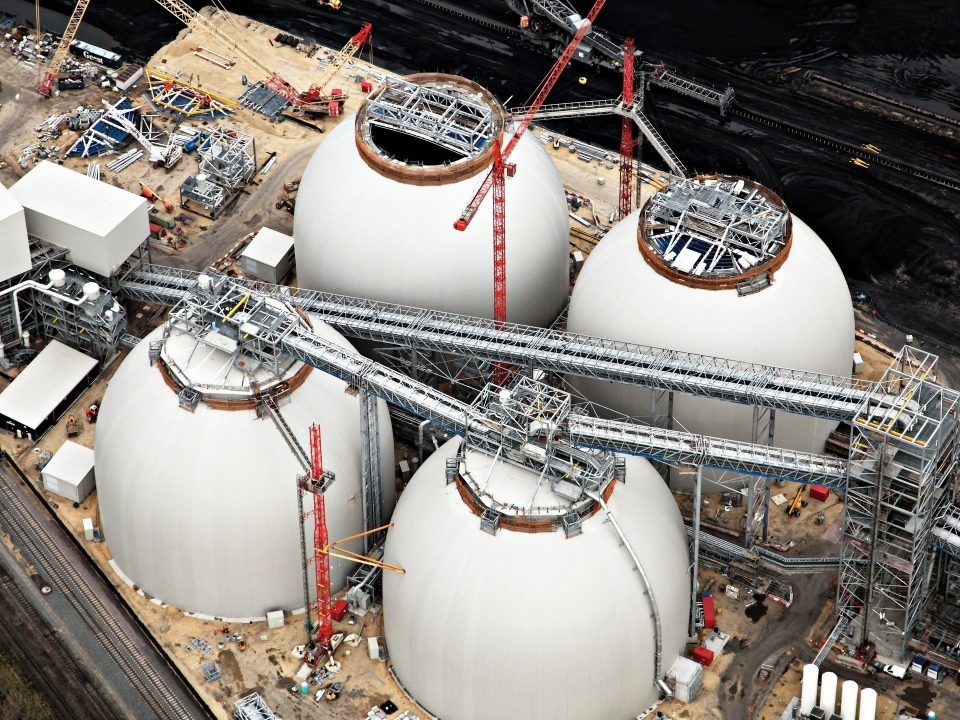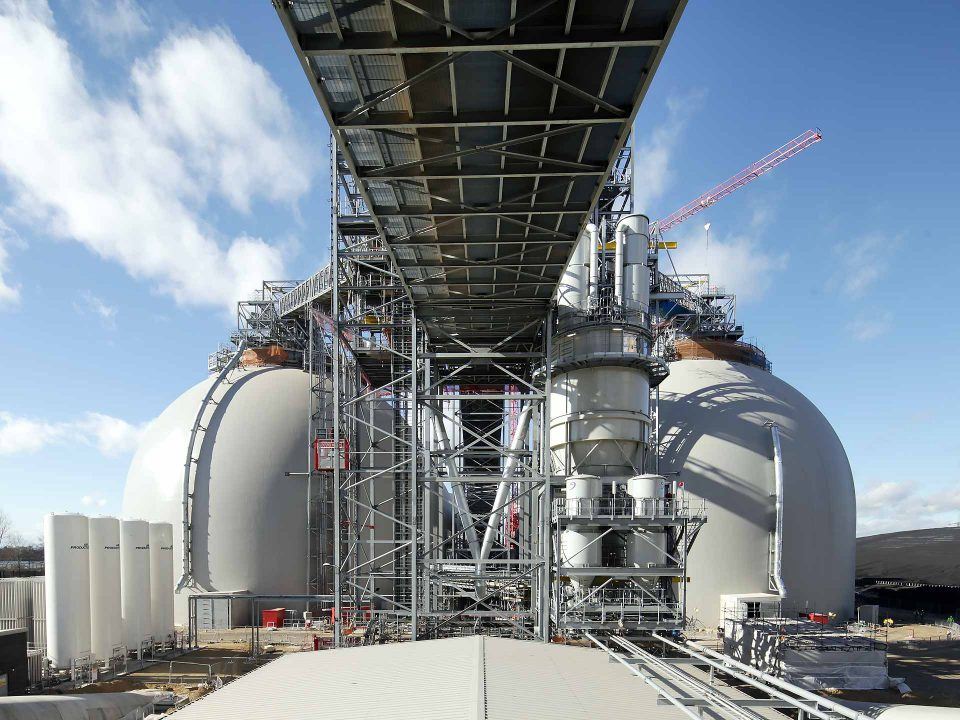One of the hallmarks of quality workmanship is the number of repeat customers it generates, and Dome Technology has worked with some of the biggest industry leaders on multiple projects. For the next several weeks, we are highlighting a lineup of Dome Technology repeat customers:
Drax
Dome Technology built four domes for power provider Drax in Selby, England, Europe’s single largest decarbonization project and Dome Technology’s largest project to date.
Each dome stores 80,000 metric tons of biomass, and Dome Technology’s team was responsible for the overall design of the dome system, including reclaim tunnels, floor slabs, ring beams, dome shells, and waterproofing. The “tops” of the domes are unique; the specialized design incorporates a 90-foot opening at the apex of each dome accommodating panels, which relieve and dissipate explosion pressure should it arise.

With the four domes for storage, Drax provides enough power to meet around seven to eight percent of the United Kingdom’s electricity needs, half of which is being generated via biomass. “Dome Technology were keen and interested from day one, had experience with biomass and other similar products from previous projects, and had over 75 reference projects worldwide,” said Drax’s strategic project engineering manager Jason Shipstone.

That projected helped secure another Drax project in 2014, where Dome Technology built two wood-pellet domes for the company’s Port Allen Facility in Baton Rouge, Louisiana, USA. The total storage volume is 80,000 metric tons.
“The overall facility has less material handling equipment due to the domes. The domes also require less maintenance and fewer equipment issues, which allow the ships to be loaded on time. All these factors combined reduce the operational costs as well,” said senior project manager Daniel Pittman, who works for Gray Construction, the EPC Drax selected for the facility’s development.
Building a facility near a levee was a challenge too. Traditional foundation methods for dealing with saturated soil could be expensive, and then there was the question of whether or not tunnels could be constructed below ground. The design required approval from the Army Corps of Engineers due to stipulations necessary for projects built within 1,500 feet of the levee, which it received.
Read more about Dome Technology repeat customers in the following posts that are part of this series: St. Marys Cement, Enviva, Ozinga, and Boral.
